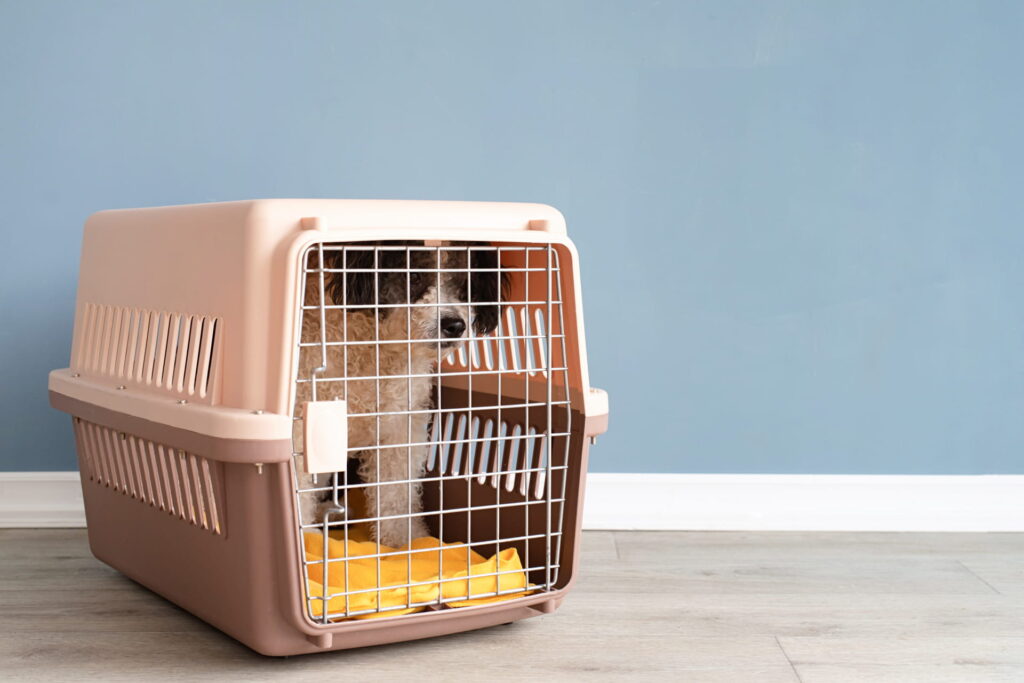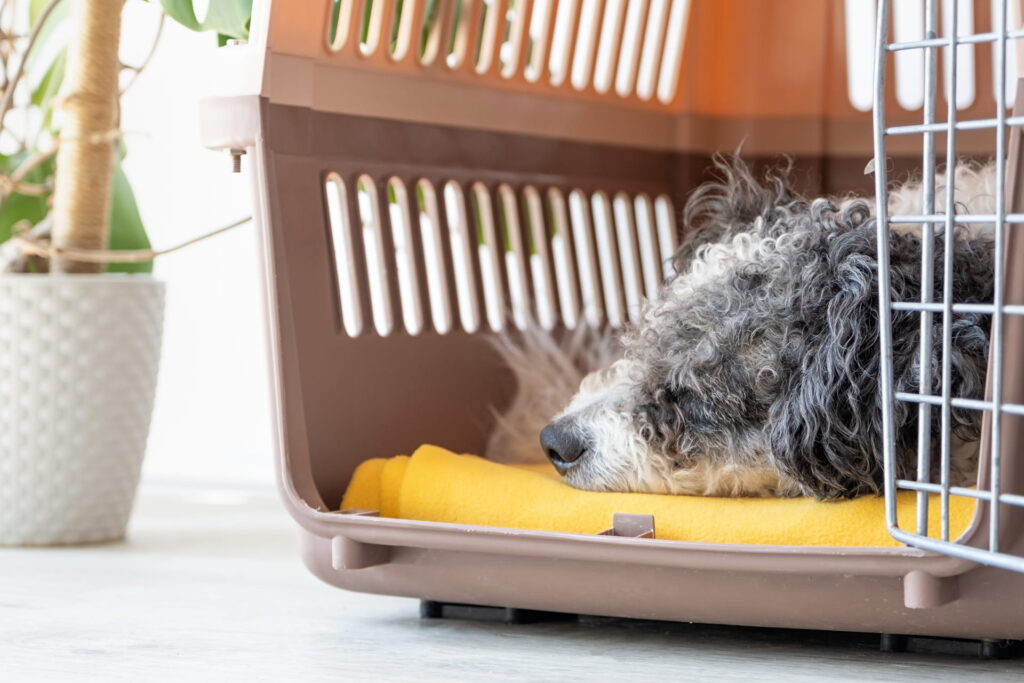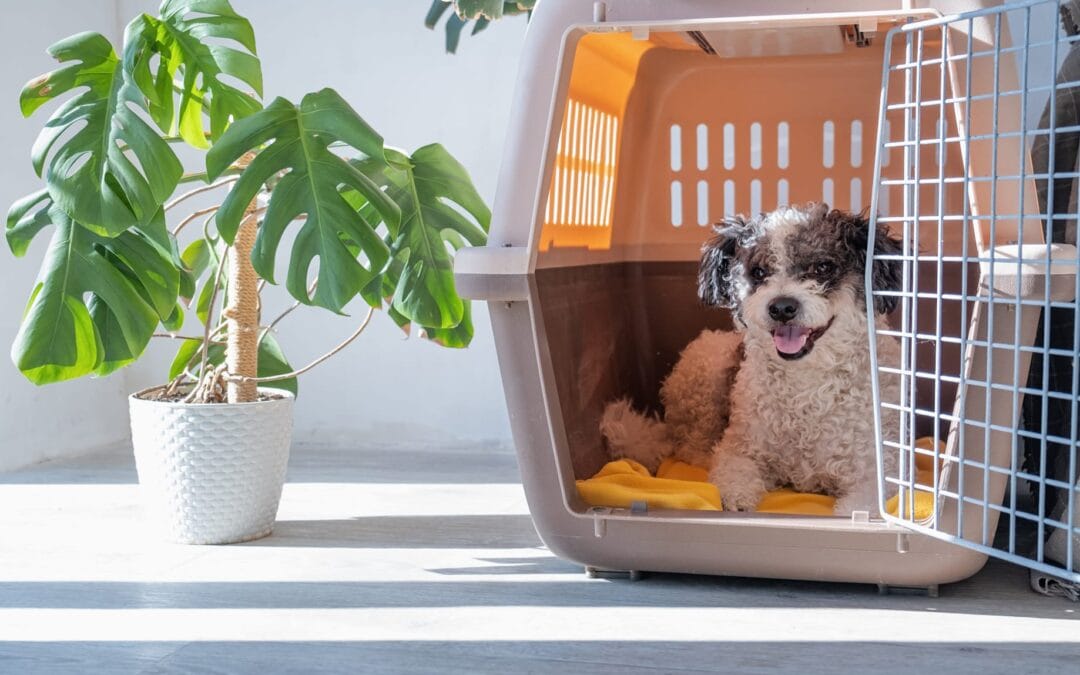Crate training shapes a foundation of trust and security between a dog and its owner when done correctly and with care. Many professional trainers agree that dogs view crates as safe spaces rather than cages, which encourages relaxation and structure throughout the day. Learning how to crate train your dog brings long-term benefits for travel, housebreaking, and calming routines. This guide will explore the exact steps to create a positive and lasting crate training experience.
1. Choosing the Right Crate Size and Type
Selecting the proper crate ensures a smoother transition and a happier dog. Trainers often share stories of excited young retrievers who took to crate training quickly simply because their crate felt cozy, not restrictive. A crate should be large enough for the dog to stand, turn around, and lie down comfortably without leaving too much extra space. Size impacts success more than people realize.
- The American Kennel Club recommends adjustable crates for growing puppies.
- Wire crates offer ventilation and visibility, while plastic crates feel more den-like.
- Soft-sided crates work best for travel but not for young chewers.
2. Making the Crate a Positive Space
Building positive feelings about the crate starts long before closing the door. Experts often introduce the crate by tossing treats inside and allowing curious dogs to explore without pressure, which builds confidence and curiosity. Rushing this stage leads to anxiety later, so taking time here makes every following step easier. Patience pays off.
- Place soft bedding and favorite toys inside the crate.
- Leave the door open during the first few sessions.
- Never force the dog into the crate; let exploration happen naturally.
3. Starting Short Crate Training Sessions
Brief early sessions lay the groundwork for future success. Handlers often begin by encouraging a dog to enter the crate, offering a treat, and then allowing them to exit after a few seconds. Gradually extending time inside creates calm familiarity instead of fear. Progress should feel like a steady, gentle climb.
- Start with 1–5 minute crate stays during waking hours.
- Always reward quiet, relaxed behavior inside the crate.
- Stay nearby at first to offer reassurance.

4. Feeding Meals Inside the Crate
Associating mealtime with crate time builds trust faster than almost anything else. Feeding meals inside the crate naturally creates positive feelings since food triggers a strong emotional response. Over time, the dog begins to connect the crate with comfort and satisfaction, not confinement.
- Move the food bowl gradually deeper into the crate if needed.
- Praise calm eating behavior during meals.
- Avoid locking the door initially while the dog is eating to prevent fear.
5. Extending Crate Time Gradually
Once basic comfort sets in, extending crate time becomes important. Trainers suggest adding just a few minutes at a time to avoid overwhelming the dog, while monitoring for signs of stress like whining or pawing. Success builds through small steps stacked carefully one after another until longer absences feel normal.
- Add 5–10 minutes to crate sessions every few days.
- Mix crate time into daily routines, not just departures.
- Return home calmly if leaving the house during crate sessions to avoid creating drama.
6. Using the Crate for Short Absences
Real-life absences test crate comfort more than practice sessions. Start by stepping out of sight for a few minutes while the dog remains crated, then slowly increase the time away. This prevents separation anxiety and teaches the dog that being alone is safe and temporary.
- Begin with leaving the room for 2–5 minutes.
- Avoid emotional greetings after returning; stay calm.
- Use a consistent phrase like “be right back” when leaving to signal short absences.
7. Overnight Crate Training Tips for Dogs
Sleeping in a crate overnight strengthens routines and promotes housebreaking. Most puppies need one or two potty breaks during the night early on, but those breaks gradually phase out as bladder control improves. Nighttime crate use teaches self-soothing and patience, both valuable skills for adult dogs later.
- Keep the crate close to the sleeping area at first.
- Ignore minor whines unless they signal true bathroom needs.
- Gradually move the crate farther away once full comfort is achieved.

Key Takeaways for How to Crate Train Your Dog
Mastering how to crate train your dog requires a mix of empathy, consistency, and celebration of small wins. Every positive experience inside the crate builds trust and security that lasts a lifetime. Whether training a high-energy puppy or helping an older dog adjust to new routines, patience combined with structured steps unlocks success.
- Choose the right crate based on size, type, and individual dog needs.
- Make the crate an inviting space before closing the door.
- Gradually extend crate time while monitoring comfort levels.
- Use meals and short absences to build positive associations.
- Practice calm overnight crate routines for long-term stability.
Frequently Asked Questions
How long should crate training take?
Most dogs adjust to crate training within a few weeks if the process stays positive and gradual. Individual personalities affect timing.
Is it cruel to crate a dog while at work?
Long periods in a crate without breaks are not ideal. Hiring a dog walker or coming home midday can make crate time manageable and humane.
Should I put toys in the crate during training?
Yes, safe toys and chew items help the dog view the crate as a positive, engaging place.
What if my dog cries in the crate?
Mild whining is normal at first. Avoid releasing the dog during cries to prevent reinforcing the behavior; wait for a quiet moment.
Can older dogs be crate trained successfully?
Absolutely. Older dogs often adapt quickly with patient, consistent training that respects their pace and comfort.

